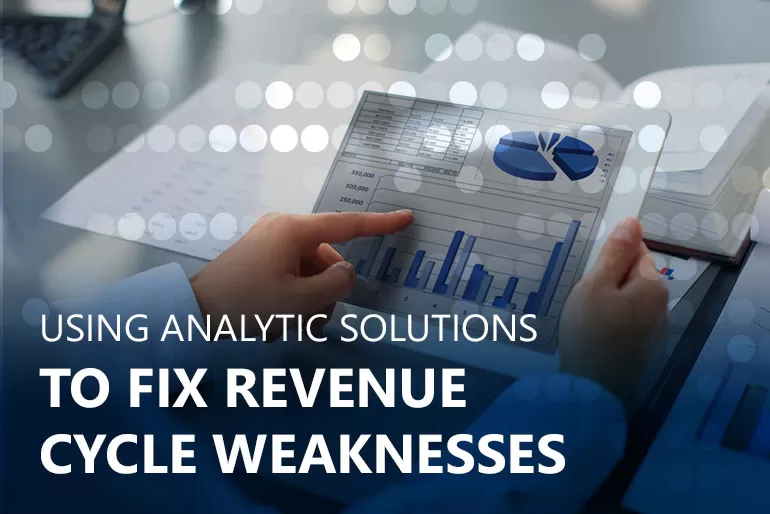Originally published October 13, 2019
Revenue cycle analytics is an approach to value analysis that includes all aspects of patient care, from supplies and equipment to services, care and outcomes. By implementing revenue cycle analytics along with population health management techniques, healthcare providers can avoid losing revenue in the midst of a value-based care reimbursement model.

What is Healthcare Revenue Cycle Analytics?
Healthcare revenue cycle analytics is a holistic way to view total spend across all categories, healthcare revenue cycle analytics improves visibility over compartmentalized spending that affects one or two areas of a provider’s operations. This is important because teams need access to all spend data to have a full picture of cost and to develop strategies to contain clinical and non-clinical expenses.
Despite their stated need for revenue cycle analytics, 7% of the CFO’s surveyed stated they still had no plans to use predictive revenue cycle analytics in the future.
A previous study found that 76 percent of hospital and health system executives expected to dedicate at least ten percent or more of their 2020 IT budgets to revenue cycle management analytics. Only seven percent of CFOs didn’t report having a plan to use predictive analytics for revenue cycle management in the near future.
How Data Analytics Can Aid the Revenue Cycle Process
Many healthcare organizations are unable to track where every dollar of their services is going. Revenue cycle analytics can help providers reclaim profits, drive down costs and view the initiatives that work together to give them true cost analysis of their practice.
For more information on how to identify weaknesses in your analytics, download the ebook, "7 Benefits of Using Healthcare Data Analytics."
Although a plethora of healthcare chief financial officers (CFOs) dedicated at least part of their technology budget to predictive revenue cycle management analytics by 2020, many provider system staff lack the appropriate skills to analyze large data sets or use sophisticated, predictive modeling solutions.
As Doug Brown, president of Black Book™ noted, "As fiscal pressures continue to build across the health care industry and as value-based care payment initiatives slowly simmer, healthcare organizations are recognizing the need for employing a robust data analytics program to pinpoint revenue cycle inefficiencies."
“With patient liability increasing five times faster than overall reimbursement, some health systems are not equipped to adapt to this trend and disparate data sources and the lack of internal analytics skills are immobilizing some providers,” added Brown. "Predictive analytics is a game changer in healthcare revenue cycle performance because it can be used to forecast revenue and correct issues that impact revenue before they occur.”
At ImagineSoftware, we understand many health systems are not equipped to adapt to the new landscape of value-based care. As a result, healthcare providers spend significant resources trying to collect payments using outdated and manual processes. They don’t take advantage of revenue cycle analytics software and other resources that can streamline their operations.
Our approach includes integrated teams, comprehensive scope and strategic planning framework to best optimize your business to care for your patients in a cost-effective manner. Our ImagineIntelligenceTM solution offers real-time analytics that can help healthcare organizations make more informed decisions regarding business models and monitor the strength of the organization – all under one dashboard. Contact us today to learn more!